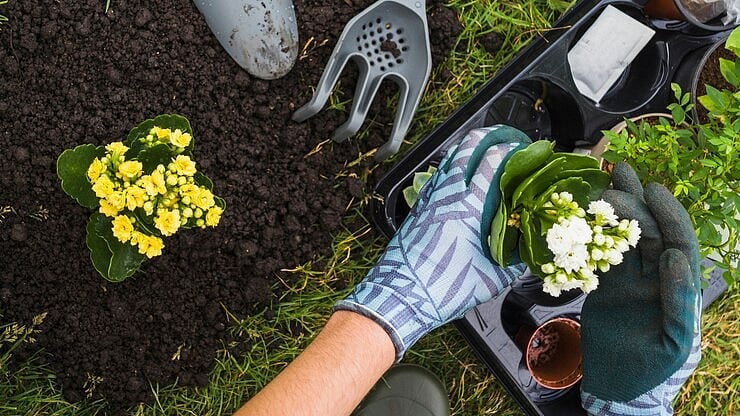In India, traditional healing practices like Ayurveda have long emphasized the importance of medicinal plants for overall well-being. Growing medicinal plants at home is not only a rewarding experience but also a sustainable way to ensure access to fresh, chemical-free herbs. Whether you have a backyard, terrace, or just a few pots on a balcony, you can cultivate these plants with minimal effort. This guide will help you get started with growing essential medicinal plants at home in the Indian climate.
Why grow medicinal plants at home?
Easy accessibility: Homegrown medicinal plants provide quick access to natural remedies for common ailments like coughs, colds, digestive issues, and skin problems.
Chemical-free & organic: Unlike store-bought herbs, homegrown plants are free from pesticides and chemicals.
Cost-effective: Once established, medicinal plants require little maintenance and can save money on buying medicines and supplements.
Eco-friendly: Growing plants at home contributes to better air quality and promotes a greener environment.
Top plants to grow
Tulsi (Holy Basil) – Queen of herbs

Benefits: Tulsi is known for its antibacterial, antiviral, and anti-inflammatory properties. It helps in boosting immunity, relieving stress, and improving respiratory health.
How to grow:
Requires well-drained soil and plenty of sunlight.
Water moderately but avoid overwatering.
Prune regularly to encourage bushy growth.
Aloe Vera – Natural healer

Benefits: Aloe Vera is widely used for skincare, burns, wounds, and digestion. It has soothing and anti-inflammatory properties.
How to grow:
Thrives in well-draining soil and bright sunlight.
Requires minimal watering – only when the soil is dry.
Can be grown in pots or directly in the ground.
Mint (Pudina) – Refreshing herb

Benefits: Helps in digestion, relieves headaches, and acts as a natural mouth freshener.
How to grow:
Prefers partial sunlight and moist soil.
Grows well in pots or garden beds.
Spreads quickly, so it should be contained in a separate pot.
Neem – Ultimate Antiseptic

Benefits: Neem is a powerful antibacterial and antifungal plant used for skin disorders, dental care, and blood purification.
How to grow
Grows best in warm and dry conditions.
Requires minimal care and regular pruning.
Can be grown in large pots or directly in the ground.
Curry Leaves (Kadi Patta) – Flavor & Health Together

Benefits: Rich in antioxidants, curry leaves improve digestion, control diabetes, and promote hair growth.
How to Grow
Needs sunlight and well-drained soil.
Water moderately, ensuring the soil is never too dry or too soggy.
Prune regularly to encourage new growth.
Lemongrass – Detox herb

Benefits: Used in herbal teas, lemongrass aids digestion, relieves stress, and has antifungal properties.
How to grow
Requires full sunlight and regular watering.
Can be grown in pots or directly in the soil.
Needs occasional trimming to encourage growth.
Ashwagandha – Indian Ginseng

Benefits: Known for its adaptogenic properties, ashwagandha helps in stress reduction, energy boost, and immunity enhancement.
How to grow
Prefers dry soil and warm temperatures.
Requires minimal watering.
Takes about 5-6 months to mature.
Brahmi – Memory booster
Benefits: Helps improve brain function, memory, and reduces anxiety.
How to grow
Thrives in moist soil and partial shade.
Can be grown in hanging baskets or pots.
Needs regular watering to keep the soil damp.
Tips for growing medicinal plants
Choose the right location: Most medicinal plants require sunlight, but some prefer shade. Understand the needs of each plant before planting.
Use organic fertilizers: Compost, cow dung, or vermicompost can enrich the soil and promote healthy plant growth.
Water wisely: Overwatering can lead to root rot, while underwatering can cause stress. Observe your plants to determine the right balance.
Regular pruning: Trimming plants helps in their healthy growth and prevents overcrowding.
Pest control: Use natural remedies like neem oil or garlic spray to keep pests at bay.
Harvesting & using
Tips
Pick leaves early in the morning for maximum potency.
Harvest flowers and roots only when they mature.
Dry leaves properly before storing them for long-term use.
Usage ideas
Tulsi Tea: Boil fresh tulsi leaves with water for an immunity-boosting drink.
Aloe Vera Gel: Extract and apply directly on the skin for burns or mix with water for a detox drink.
Mint Infusion: Add fresh mint leaves to warm water for a refreshing digestive tonic.
Neem Paste: Grind neem leaves and apply to acne-prone skin for a natural remedy.
Conclusion
Growing medicinal plants at home is a simple yet effective way to embrace a healthier lifestyle. With basic care, these plants can thrive in small spaces and provide natural remedies for common ailments. Whether you are a beginner or an experienced gardener, adding medicinal plants to your home garden will enrich your life with their healing properties.
So, why not start today? Pick a few plants from this list and begin your journey toward natural wellness!
(Sujal Chawathe is a CA by education but a gardener at heart. Her venture Indoor Greens helps urban offices and homes, add and maintain plants)
